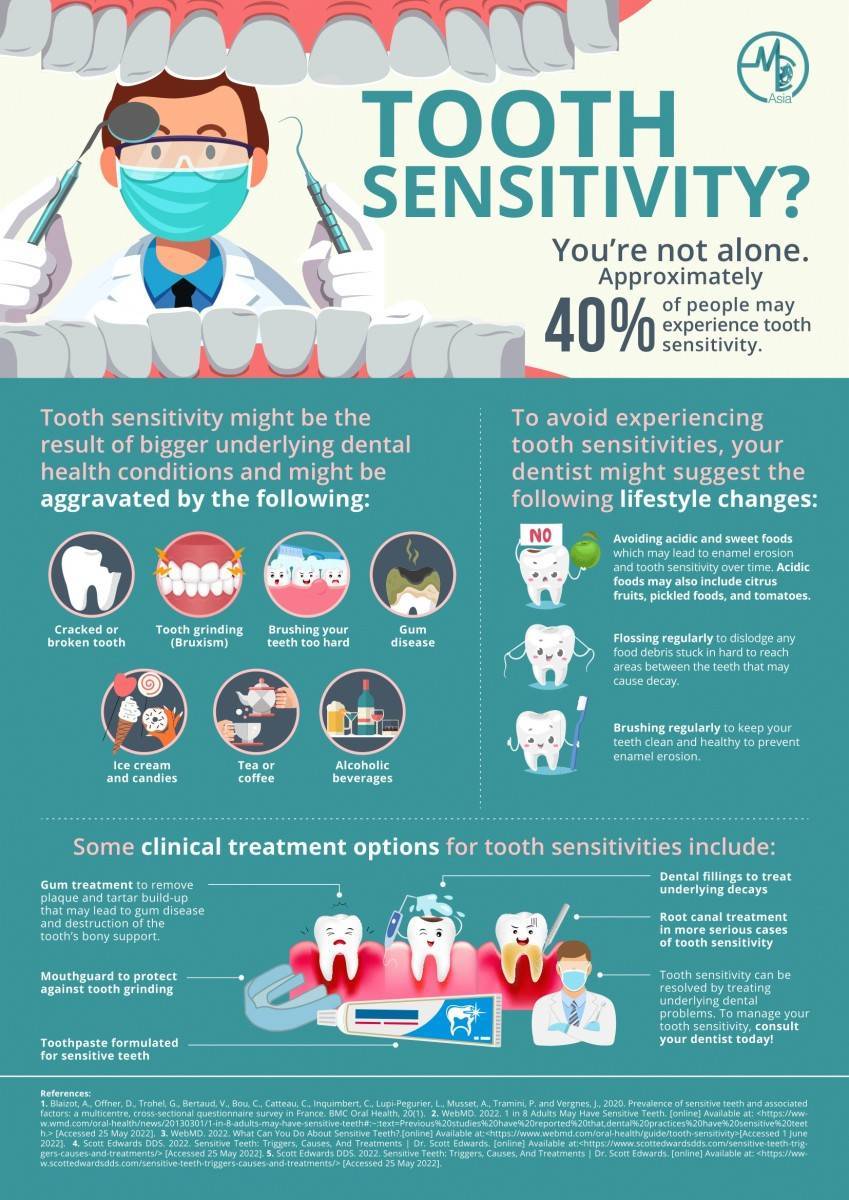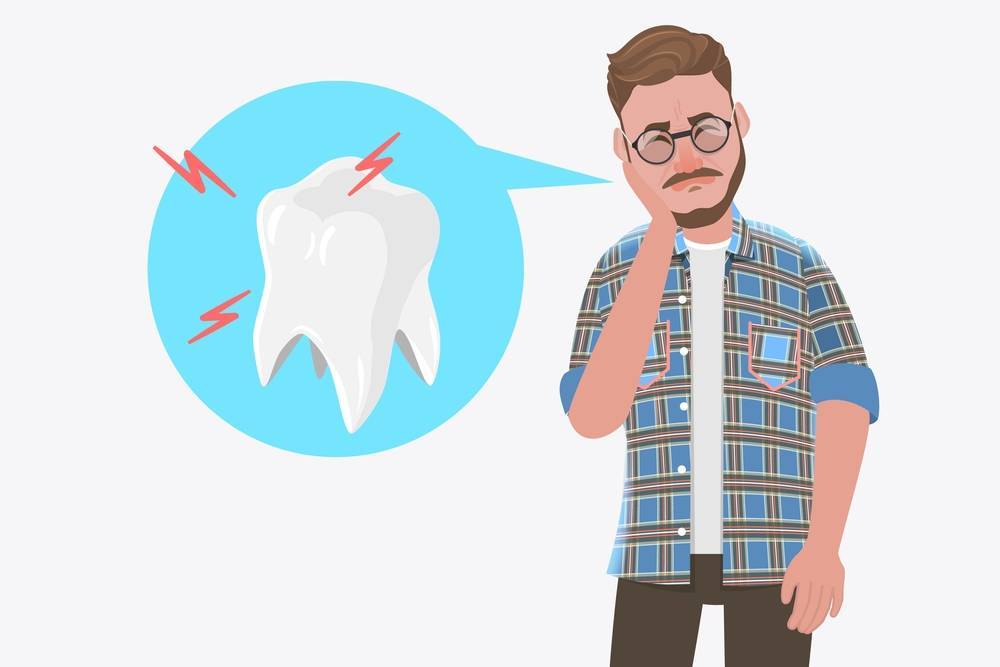Having tooth sensitivity can mean anything from getting mild discomfort to having severe pain that can last for hours. The good news? You are not alone, and it is actually a very common dental problem that your dentist will be able to treat. Read our infographic below for more information on tooth sensitivity and how what you can do about it.
PSA: Medical Channel Asia (MCA) is now on Telegram! Join us here for daily reads and the latest updates at your fingertips!

[Download the full infographic in PDF]
If you have sensitive teeth, hot or cold foods, as well as sugar-rich and acidic foods can all cause discomfort – but why is that so? Enamel, a tooth’s outer protective layer, covers the dentin. The dentin contains microscopic tubules (small hollow tubes or canals). When the enamel wears down and the dentin is exposed, the tubules allow heat and cold or acidic foods to stimulate the nerves and cells inside the tooth. In gum disease, inflamed gum tissue may expose the root surface. The roots are usually protected by the gum, and not built to withstand extreme temperatures like the rest of the tooth. With the roots of the tooth exposed, tooth sensitivity can folllow.
The best things you can do for your oral health are establishing a dental hygiene routine, and scheduling regular checkups with your dentist. Keep track of your tooth sensitivity symptoms closely. Persistent or worsening tooth sensitivity may be an early warning sign of more serious dental problems! Your dentist will be able to diagnose and treat the underlying dental problems. They can also help you develop good oral health habits to combat tooth sensitivity from recurring. Definitely do not shy away from your dentist due to the pain – ignoring the problem can make things worse!

